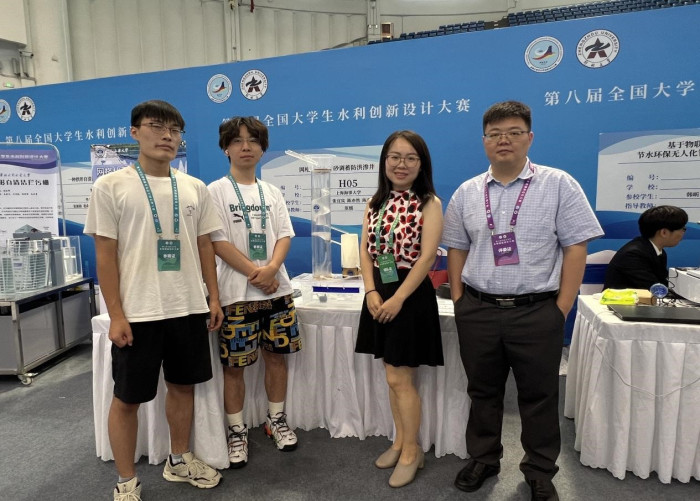From July 15 to 18, the 8th National College Students Water Conservancy Innovation Design Competition was held in Zhengzhou University. Three teams composed of undergraduates majoring in port Channel and coastal engineering won one first prize and two second prizes.
There were three teams from the school participating in the competition. Under the guidance of teacher Yuan Yuan, Zheng Feng, Zhang Yibin, Chen Yversa and Chen Jiayi won the first prize for their work Grid Rain, Water and sand control and flood Control Seepage Well. Directed by Mr. Tang Peng and produced by Huang Jingchun, Yan Shu, Xu Yingjia, Shao Lei and Zhou Yilei, A Wave Power generation Device using multi-pendulum paddle boat type won the second prize; Directed by teacher Zhang Jie and made by students Sun Jiayu, Zhang Min, Huang Keke and Summer Ze, A New type of Energy dissipation and energy recovery device for Ship Lock Short corridor water transmission System won the second prize.
During the competition, Professor Shao Wei, director of the Department of Port Channel and Coastal Engineering, participated in the competition as an expert judge, and watched and guided the competition on site.
The National Water Conservancy Innovation Design Competition for College Students is co-sponsored by the China Water Conservancy Education Association and the Guiding Committee for the Teaching of Water Conservancy Majors in Colleges and Universities of the Ministry of Education. It is an Olympic competition for college students majoring in water conservancy and is held every two years. The competition aims to encourage undergraduate students of water conservancy majors to actively participate in innovative practical training, cultivate their cooperative spirit, innovative consciousness and practical ability, and cultivate a group of innovative talents for the construction and development of water conservancy in our country. With the theme of New stage, New Water Conservancy, the competition focused on prioritizing water conservation, harmony between people and water, sustainable development and the application of new technologies. It attracted 320 groups of works from 119 universities, including Harbin Institute of Technology, Wuhan University, Hohai University, Huazhong University of Science and Technology, Tianjin University and Sichuan University. After the network preliminary examination, 156 groups of works from 95 universities entered the final finals.

Figure 1 Competition scene 1

Figure 2 Competition scene 2
